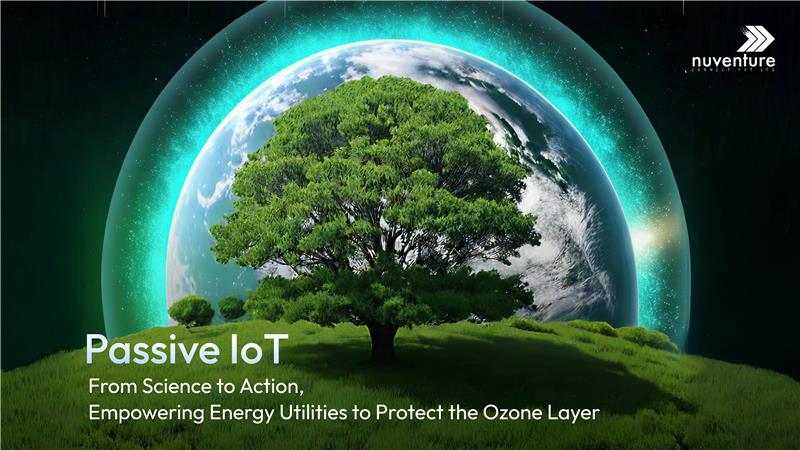What if your energy infrastructure could help heal the ozone layer while you monitor emissions remotely and predict anomalies, all affordably?
That might sound like a stretch. Yet, in a world where every ounce of sustainability counts, energy utilities are uniquely positioned to go beyond providing power to safeguarding our atmosphere. Ozone depletion is not just a global environmental issue, it touches utilities directly through emissions of ozone impacting gases and the regulatory and reputational pressures that follow.
Connecting Energy Utilities to Ozone Depletion
Energy utilities including power generation, transmission systems, oil and gas facilities, and renewables often rely on gases like SF₆ in switchgear, and refrigerants such as HFCs for cooling. These compounds can contribute to ozone damage. Add to that CO₂, NOₓ and SO₂ emissions, and you have a high emitter profile under growing regulatory scrutiny.
These utilities face mounting expectations: net zero targets, carbon reporting mandates, phase down of ozone depleting substances under the Montreal Protocol and Kigali Amendment, and ESG pressures such as predictive analytics for sustainability tracking.
Global emissions of ozone depleting substances (ODS) have dropped by more than 99% since the Montreal Protocol came into effect. That is not just progress, it is proof that science, policy, and global cooperation can drive real healing. Yet recovery is gradual. For instance, projected return to 1980 ozone levels stands at around 2040 globally, around 2045 in the Arctic, and around 2066 in Antarctica, assuming current measures hold.
Enter: Passive IoT
Passive IoT refers to devices that are low power, often self-powered via energy harvesting such as solar, vibration, or thermal sources, requiring minimal maintenance. These sensors can perform continuous environmental monitoring without frequent battery changes or energy drain.
Why Passive IoT Fits Energy Utilities Perfectly
- High Emissions Profile
Utilities are among the top sources of greenhouse gases and ozone impacting chemicals such as CO₂, NOₓ, SO₂, HFCs, and SF₆. These must be tracked and managed.
- ESG and Regulatory Pressure
Pressure to meet net zero pledges, ESG disclosures, ozone depleting substance phase outs under the Montreal Protocol and Kigali Amendment, and climate compliance is mounting.
- Distributed Asset Landscape
Utilities operate across wide geographies including plants, substations, grids, and renewable sites. Passive IoT allows real time emissions monitoring across all assets with minimal infrastructure overhead.
- Actionable Data for Sustainability
Continuous, granular data supports tracking of sustainability KPIs, ESG reporting, and compliance with global agreements like the Paris and Kigali accords.
Use Cases: Passive IoT in Energy and Utilities
- Substation and Power Plant Monitoring
Deploy passive IoT sensors to detect leaks of ozone impacting gases like SF₆ and HFCs in high voltage equipment or cooling systems. Early detection avoids both environmental harm and costly equipment failures.
- Emission Tracking at Scale
Passive IoT nodes around generation sites collect pollution data such as CO₂, NOₓ, and SO₂, and feed it into cloud dashboards. Utilities can monitor emissions continuously, not just periodic inspections.
- Grid Wide ESG Compliance
Real time dashboards let utilities automate ESG reporting, share sustainability metrics with regulators and investors, and demonstrate commitment to global targets.
- Renewable Energy Optimization
Around wind farms or solar arrays, passive sensors monitor air quality impact, showing how renewables contribute to cleaner, safer energy while improving utility ESG positioning.
How Nuventure Specifically Enables Passive IoT for Energy & Utilities
Partnering with Nuventure means drawing on a powerful blend of expertise and end-to-end capabilities that simplify the integration of passive IoT systems into energy and utility operations and deliver measurable ozone protection value.
Nuventure offers full-cycle IoT development: from device firmware and embedded hardware design to connectivity solutions (LoRa, NB-IoT, BLE), cloud integration, and AI-powered dashboards. Our team architects self-powered, low-energy sensor platforms to capture real-time emissions data such as SF₆, HFCs, CO₂, NOₓ, and SO₂ across substations, plants, renewable farms, and transmission networks.
Connectivity is handled securely and reliably using protocols appropriate to each utility environment; data is funneled into robust cloud infrastructures with intuitive dashboards and visualization tools for remote monitoring. Built-in AIoT (AI connected with IoT) and analytics capabilities enable predictive insights and anomaly detection that anticipate leaks or inefficiencies before they become costly or environmentally harmful.
This integration not only streamlines real-time emissions monitoring but also enhances ESG reporting workflows. With granular insights captured automatically, utilities can confidently generate compliance reports aligned with global targets like the Kigali Amendment or Paris Agreement. The efficiency of the platform enables faster deployment (often under 12 weeks to MVP) while ensuring enterprise-grade security with ISO 27001 and SOC 2 certifications.
What Makes Nuventure the best IoT Service Provider?
With 15+ years of experience across industries, Nuventure combines affordable IoT services with cutting edge remote monitoring, predictive analytics, and end to end IoT capabilities. Their best IoT services in USA include robust after-sales support, ensuring your utility’s passive IoT deployment is not just installed, but optimized, dependable, and future ready.
A Final Word: The Ozone Urgency and Your Role
Ozone recovery is real, but fragile. As the world inches toward 2040 to 2066 for full recovery, every proactive step counts. For energy utilities, adopting passive IoT is not just smart, it is essential.
Do not just monitor emissions, be part of the solution. Partner with Nuventure to deploy affordable IoT services, leverage real time data, meet ESG goals, and help save the ozone layer for future generations.
